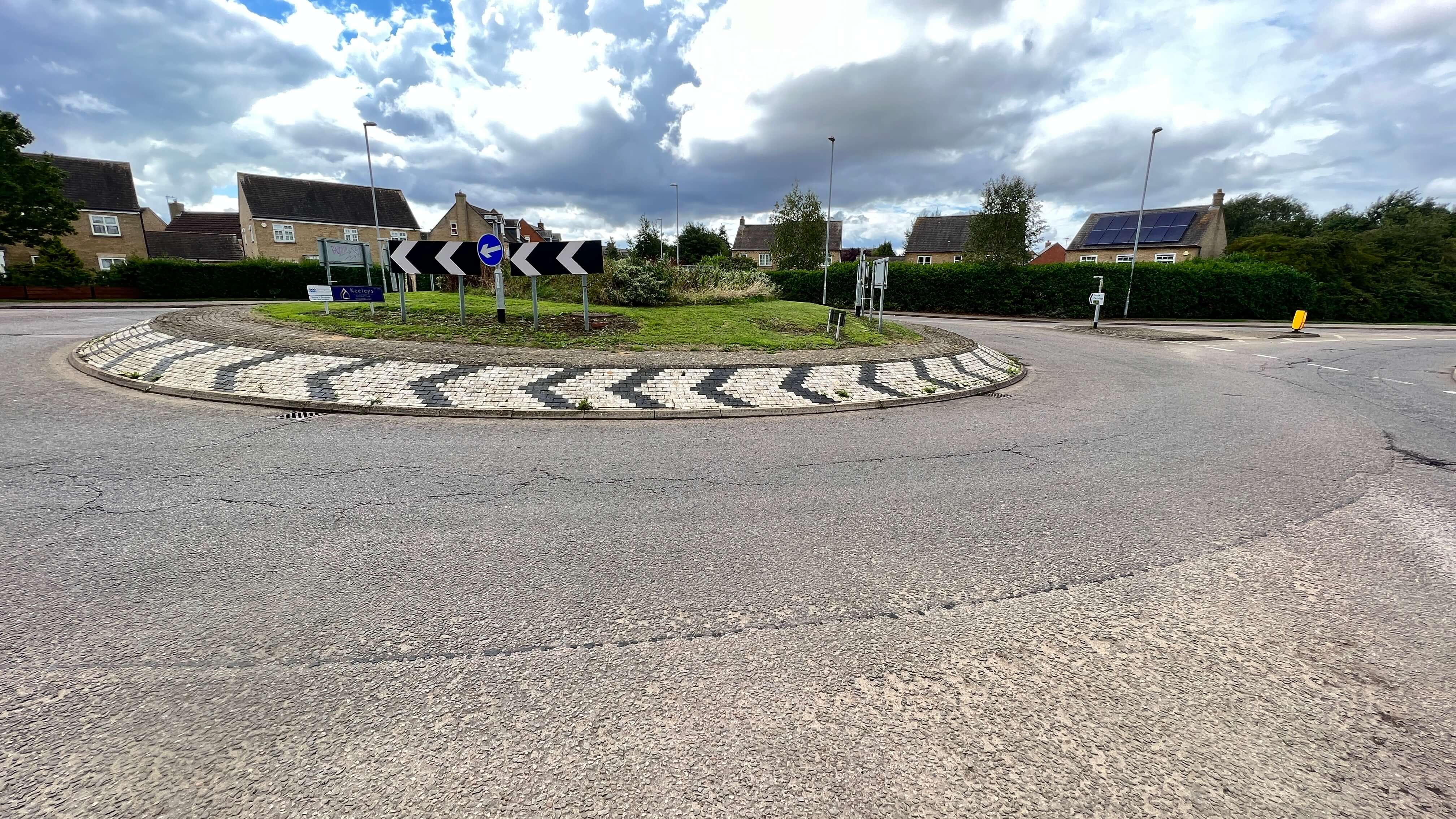Seam Joints on Roundabout
Managing a High-Stress Interface
Asphalt seam joints on roundabouts are among the most vulnerable features in the road network.
Due to their circular geometry and the nature of vehicle movement, roundabouts are subjected to constant, multidirectional loading. Vehicles braking, turning, and accelerating across the curved layout exert both vertical and lateral forces—which concentrate stress on the pavement, particularly along seam joints, where two asphalt mats meet.
These forces result in:
- Premature joint failure
- Cracking, rutting, and edge fretting
- Ingress of water and subsequent freeze–thaw damage
- Surface deformation that reduces ride quality and safety
Why Seam Joints Fail Faster on Roundabouts
Unlike straight carriageways, where loading is linear and more predictable, roundabouts create torsional and shear stresses at every seam. Over time, these stress concentrations break down the joint interface, especially if the installation technique or materials used are not sufficiently robust or flexible.


Engineering Resilience Into the Joint
To maintain the structural integrity and performance of roundabouts, highway engineers must:
- Specify high-performance, flexible joint systems
- Use materials compatible with adjacent asphalt layers
- Ensure watertight sealing to prevent sub-layer deterioration
- Plan for regular inspection and early intervention repairs
Our Solution: Jointmaster for Roundabouts
At Rhino Asphalt Solutions, we specialise in flexible joint and crack sealing systems that accommodate the movement and loading seen on roundabouts. Our BBA HAPAS-approved Jointmaster system offers:
- Superior flexibility to absorb stress without cracking
- High skid resistance (≥60 SRV) to maintain surface safety
- Durability proven across the UK motorway and local authority network
- Options for inlaid or surface-applied treatments
A properly sealed seam joint isn’t just about durability—it’s about preventing water ingress, preserving ride quality, and avoiding costly unplanned maintenance
Willingdon Roundabout, Eastbourne


A recessed crack repair method addresses these challenges by:
- Cutting and removing the damaged asphalt along the crack line
- Creating a defined, stable channel or rebate for treatment
- Installing a flexible, high-performance repair material designed to absorb future movement and withstand repeated loading
This process not only eliminates the compromised material but also provides optimal bonding conditions, ensuring that the new repair integrates seamlessly with the surrounding pavement.
Key Benefits:
- Restores structural integrity to failed joints
- Enhances load tolerance under roundabout traffic stress
- Prevents water ingress and future freeze–thaw damage
- Improves ride quality and skid resistance
- Offers a neat, long-lasting finish with reduced maintenance need
By recessing the repair, engineers create a more robust and protected treatment zone—essential for high-stress features like roundabouts.

